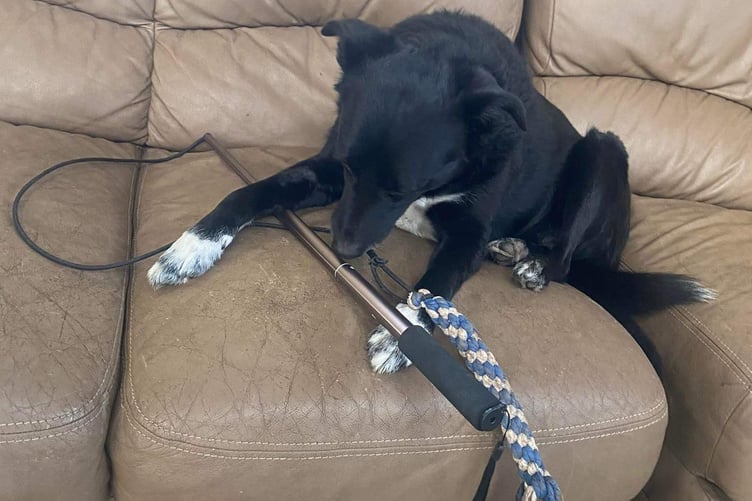Have you ever used a flirt pole?
Perhaps that questions should be put into context. Have you ever used a flirt pole to train your dog? If you haven’t, then read on …
A flirt pole is a popular, but perhaps under-used, training aid for dogs, particularly for those who are toy and game orientated (but it should not be used with dogs who are arthritic, elderly or not fully grown).
Used correctly, it can be effective in engaging and exercising dogs, and training them to modify certain behaviours including lead reactivity, excessive jumping and hyperexcitability.
A flirt pole is simply a long pole or handle with a rope or string firmly attached at one end, tied to a toy (imagine a fishing line hooked to a teddy bear, or a super-sized cat toy).
They can be purchased easily online, but they are also simple to make at home.
The pole should be sturdy and between four and six feet long, and the rope should be roughly the same length as the pole.
The best toy to attach is one that your dog already likes to play with – maybe one with a squeak, or one that’s very fluffy – but it needs to be durable and be able to withstand your dog’s biting and pulling.
Introduce your dog to the flirt pole by allowing them to sniff and investigate it without initiating play.
This step is important for identifying and reducing any potential fear or anxiety your dog may have towards the pole. Once your dog is comfortable, and suitably warmed up with a short walk beforehand, play can begin.
Make sure you have plenty of space, ideally outdoors on a non-slippery surface, free of obstructions that your dog may accidentally run into and injure itself.
Then encourage your dog to interact with the toy by dragging it on the ground and then making quick, darting movements – like casting a fishing line. Keep the toy on the ground so that your dog doesn’t jump up and put stress on their joints.
Twist and turn the pole in different directions, and keep the game exciting.
But be careful not to overstimulate your dog, and don’t tease them – allow them to catch the toy from time to time, and play with it until you ask them to stop.
It’s also important to monitor your dog for signs of fatigue, since flirt pole play can be physically demanding.
So how can this be a training aid? Because a flirt pole engages the dog, and demands their full attention, it makes it easier for the handler to reinforce simple commands such as ‘sit’, ‘down’, ‘leave’ and ‘give’. Initially you may also need to reward their compliance with these commands with a treat.
Always end a flirt pole session on a positive note whilst your dog is still engaged and excited, so that they retain positive associations with its use.
We wondered whether rescue dog, Phoebe, would like a flirt pole play session, but she just isn’t toy orientated and decided she’d prefer a cuddle on the sofa instead.
Having said that, she is an active and inquisitive dog, and enjoys her walks and adventures in the countryside. She’s an eight-year-old border collie cross labrador, with a sweet and gentle nature, but her previous owners had a baby and didn’t think they could cope with Phoebe as well.
Phoebe is nervous of strangers and other dogs, and so she’ll need a quiet new home where she can gradually develop her self-confidence and trust in her new family.
Whether she will ever learn to love a flirt pole is in doubt; but what is certain is that she will become a loving and devoted companion once she’s found her new family.

.jpeg?width=209&height=140&crop=209:145,smart&quality=75)



Comments
This article has no comments yet. Be the first to leave a comment.